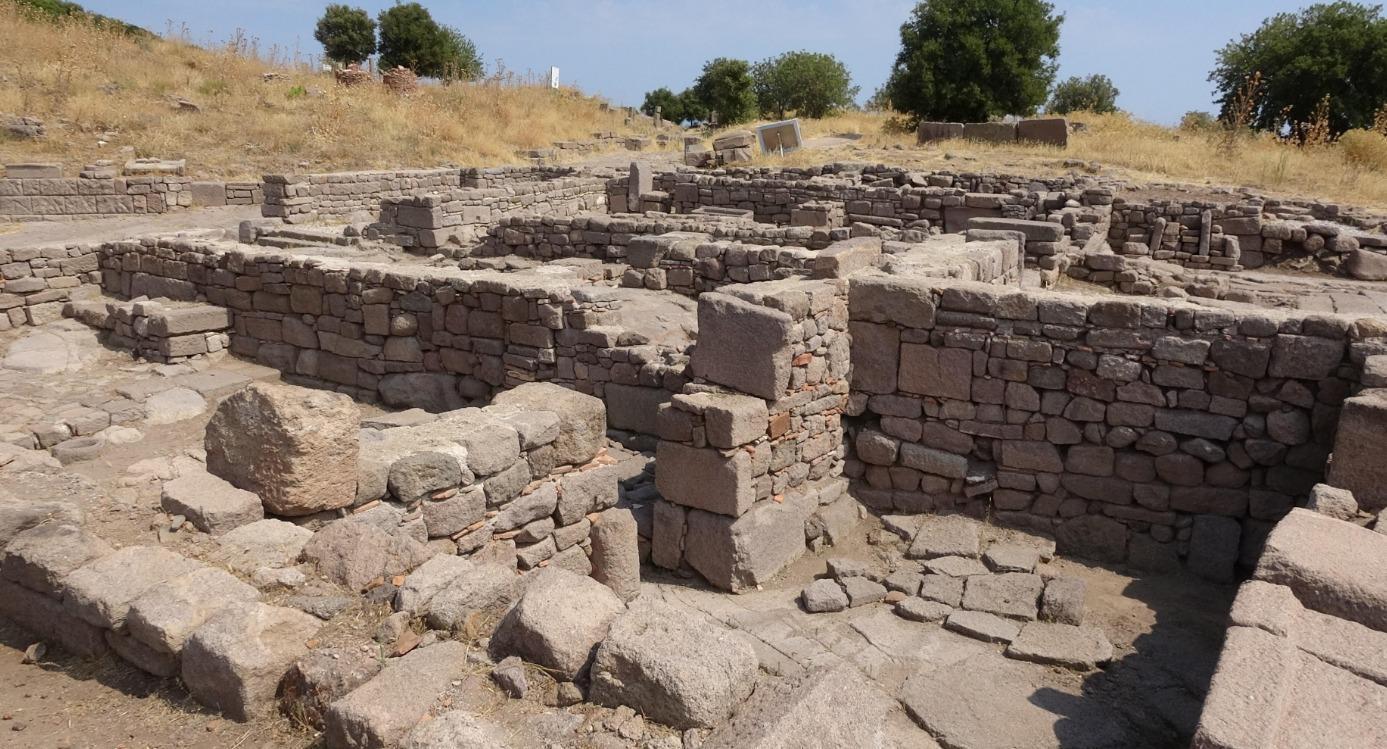
Archaeological excavations that have been carried out in the ancient city of Assos in the Ayvacık district of the southern province of Çanakkale bring new finds. Works in the Roman-era Nymphaeum (Monumental Fountain) in the east of the Agora, a third century B.C. weight unit, which was made of lead, has been unearthed. Weighing 320 grams, the weight unit was the largest one to date, officials reported. There is a depiction of the Gryphon, a mythological creature used on the city's coins, on the scales.
Officials also reported that in some of the weight units, the name of the city was written with the abbreviation “ASS.”
Excavations are carried out throughout the year by a team of 25 people under the chairmanship of Çanakkale Onsekiz Mart University (ÇOMU) Faculty Department of Archeology member Professor Nurettin Arslan in the 7,000-year-old Assos Ruins, shown among the well-preserved examples of the Greek city-states where Plato's and Aristotle's students were active.
In addition to the repair and arrangement activities in the field, restoration and documentation activities are also carried out in the excavation laboratory.
Excavations were resumed by a Turkish team in the ancient city in 1981 after short-term U.S.-led excavations between 1881 and 1883. Arslan said that works have been continuing uninterruptedly for 42 years since then, adding that that Assos is one of the oldest excavation centers in Türkiye.
Stating that this year’s works continue in the Byzantine-era Xenedochion (Inn), the Roman-era Nymphaeum and Hellenistic-era Gymnasium, Arslan said that they want Assos to be a place of attraction for festivals and concerts after the restoration projects especially in the theater of the city. He added that big budgets are needed for such projects.
Noting that excavations continue in a Roman-era fountain on the eastern edge of the Agora, Arslan said, “Our work here is not finished yet. However, since the space between this fountain and the main rock was used as a garbage dump in the third and fourth centuries, it provides important data for archaeological research. We shared some finds that were found here last year. In the same area - in Late Roman-era Assos, it was seen that cattle bones were more abundant among the pots and pans used in daily life as well as small terracotta figurines used in religious rituals, tableware and various animal bones used especially for nutrition. It was determined that animals such as pigs, goats and sheep were consumed by people. There are also pigs and other animals. More precise data will be obtained after the reports of experts on this subject.”
Arslan stated that they found the weight unique to the city of Assos in the space used as a garbage dump between the fountain and the main rock in the fountain structure, adding, “It is a weight unique to the city of Assos; it is made of lead. In ancient times, each city had its own weight units. Weights were used especially in commerce or for weighing something. The weight of the city of Assos includes a mythological animal called the gryphon. The same were also found in tombs from the Hellenistic period. But their weight was less. This weight unit is heavier than any samples we have found so far, which is weighing about 320 grams.”